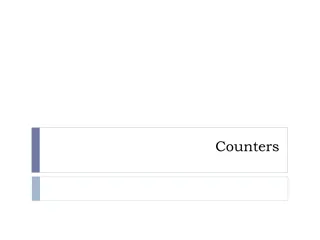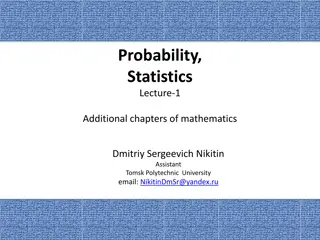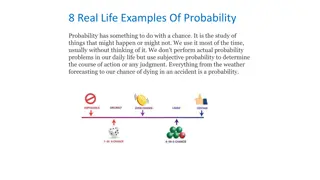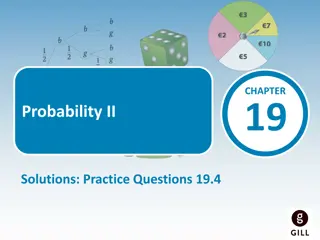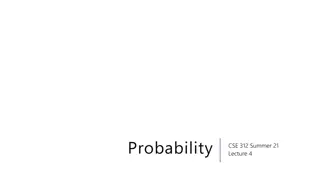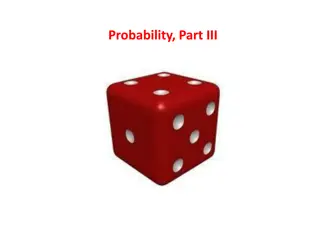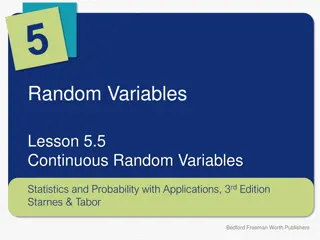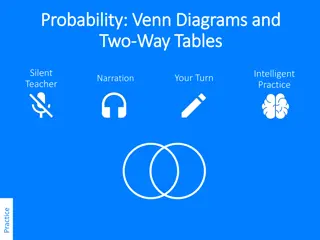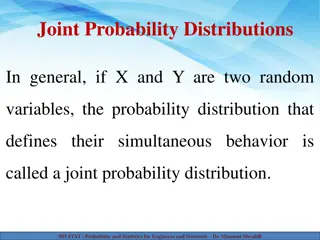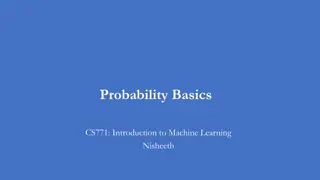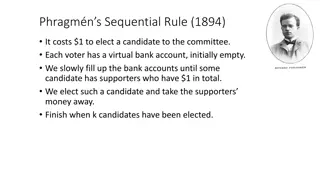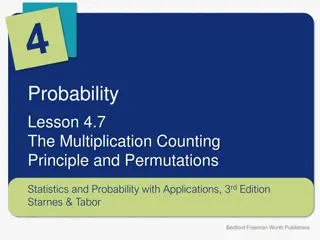Understanding Probability of Individual Events in Sequential Outcomes
Explore the concept of calculating probabilities for individual events in a sequence where outcomes remain constant. Learn how to apply this concept using examples such as rolling dice and drawing numbers, and practice with the provided homework questions to solidify your understanding.
Download Presentation

Please find below an Image/Link to download the presentation.
The content on the website is provided AS IS for your information and personal use only. It may not be sold, licensed, or shared on other websites without obtaining consent from the author. Download presentation by click this link. If you encounter any issues during the download, it is possible that the publisher has removed the file from their server.
E N D
Presentation Transcript
Lesson 20-2 Probability of Individual Events
Probability of Individual Events Consecutive events in which total outcomes do not change Probability= P(first event) x P(of the second event) Probability = success/total
Example You roll a numbered dice two times. Find the following probabilities. a. Rolling a 2 then a 3 b. Rolling a even number then 5 c. Rolling a number greater than 2 then a number less than 3
Example You have the numbers 1-12 in a hat. You draw out numbers for a prize. You replace the number after each draw find the following probabilities a. Drawing a prime number then multiple of 3 b. Drawing a 7, then a even number, then a number greater than 9
Homework Pg. 1023; 5-7, 9-11, 13, 14





















